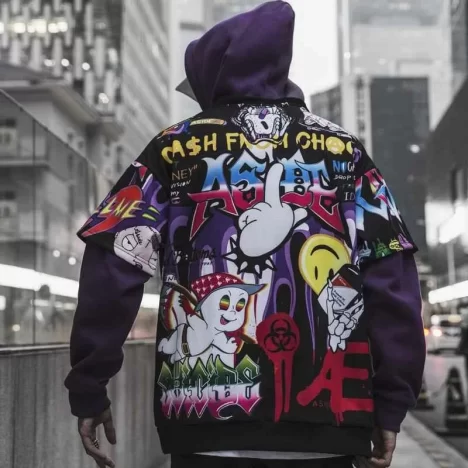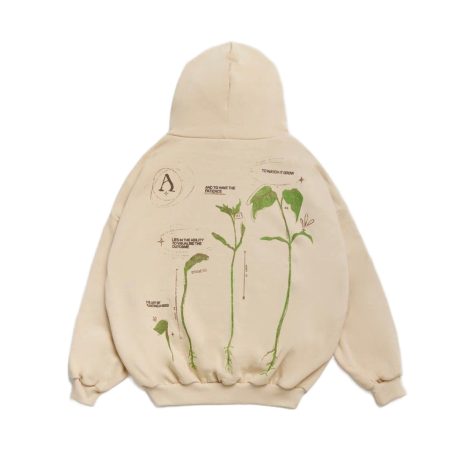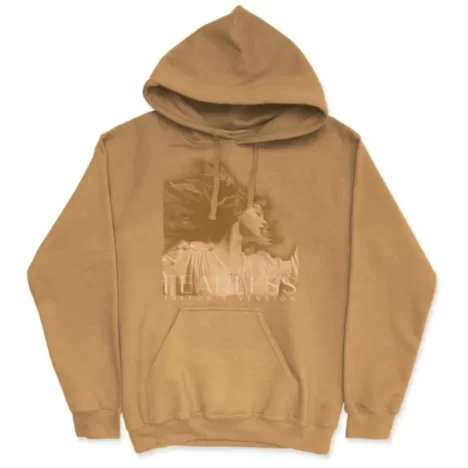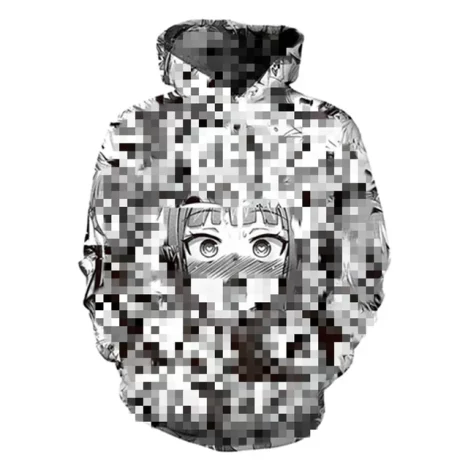The hoodie, a garment once relegated to the realm of athletic wear and utilitarian dressing, has undergone a remarkable transformation. Today, it stands as a ubiquitous fashion staple, a blank canvas for self-expression, and a powerful symbol within various cultures. This evolution of hoodie design reflects a confluence of factors, from its practical origins to its adoption by youth movements and streetwear trends.
Contents
- 1 A Utilitarian Beginning
- 2 Athletic Wear Takes Center Stage
- 3 From the Field to the Streets
- 4 A Fashionable Ascent
- 5 The Rise of Streetwear
- 6 A Canvas for Creativity
- 7 Beyond Aesthetics: Functionality Revisited
- 8 A Symbol of Identity
- 9 The Hoodie’s Evolution: Beyond Design
- 10 Sustainable Materials: Rethinking Fabrics
- 11 Transparency: Shining a Light on the Supply Chain
- 12 Fair Trade: A Focus on Social Responsibility
- 13 Eco-Conscious Consumers Hoodie Design: A Greener (and Stylisher) Future
- 14 The Future of Hoodie Design
A Utilitarian Beginning
The hoodie’s story starts in the early 20th century, where it emerged as a functional piece of clothing. Workers in cold environments, particularly those in meatpacking factories and on docks, donned hooded sweatshirts for warmth. These early iterations were far from the stylish pieces we see today. Typically crafted from heavy wool or fleece, they prioritized function over fashion.

Athletic Wear Takes Center Stage
A turning point came in the 1930s with the rise of sportswear. Champion, a brand synonymous with athletic apparel, introduced a hooded sweatshirt specifically designed for athletes. This version, made from a lighter fleece material, offered improved flexibility and breathability during workouts. Soon, other athletic brands followed suit, solidifying the hoodie’s place in the athletic wear arena.
From the Field to the Streets
The hoodie’s journey from athletic fields to city streets began in the 1970s. The burgeoning hip-hop culture in the Bronx embraced the garment for its practicality and loose-fitting style. Often paired with baggy jeans and sneakers, the hoodie became a uniform of sorts, reflecting a rejection of mainstream aesthetics. This association with hip-hop cemented the hoodie’s status as a symbol of rebellion and youth culture.

A Fashionable Ascent
By the 1990s, the hoodie had infiltrated the mainstream fashion world. High-end designers began incorporating their own interpretations of the classic sweatshirt into their collections. Celebrities were spotted sporting hoodies, further amplifying their appeal. The hoodie transcended its utilitarian and cultural roots, becoming a versatile piece that could be dressed up or down.
The Rise of Streetwear
The late 1990s and early 2000s witnessed the explosion of streetwear fashion. Skateboarding culture, with its emphasis on comfort and individuality, played a significant role in propelling the hoodie’s popularity. Skate brands released their own lines of hoodies, often featuring bold graphics and logos. This focus on graphic design became a defining characteristic of hoodie fashion, allowing for further self-expression.

A Canvas for Creativity
The hoodie’s blank canvas of fabric presents a unique opportunity for creative expression. From simple band logos to intricate illustrations, the possibilities for hoodie design are endless. Independent artists and streetwear brands have capitalized on this, creating limited-edition hoodies that are as much a piece of art as they are an article of clothing.
Beyond Aesthetics: Functionality Revisited
Despite its rise in fashion, the hoodie’s utilitarian roots haven’t been entirely abandoned. Brands are continuously innovating, developing new materials and technologies to enhance the hoodie’s functionality. Performance hoodies, crafted from moisture-wicking fabrics, cater to athletes seeking both comfort and practicality. Additionally, advancements in printing techniques have allowed for the creation of water-resistant and even light-reflecting hoodies.

A Symbol of Identity
The hoodie’s ability to transcend fashion trends and become a symbol of identity is another facet of its enduring appeal. College students wear hoodies emblazoned with their school’s logo, fostering a sense of community and belonging. Social justice movements have adopted the hoodie as a symbol of protest, its anonymity allowing individuals to focus on the message rather than the messenger.
The Hoodie’s Evolution: Beyond Design
The hoodie’s journey from utilitarian garment to cultural icon is undeniable. But as with any fashion trend, its environmental and ethical impact deserves scrutiny. While design innovation continues apace, the conversation around sustainable materials, supply chain transparency, and fair trade practices in hoodie production is gaining momentum.

Sustainable Materials: Rethinking Fabrics
Traditional hoodies often rely on cotton, a resource known for its water-intensive cultivation. Organic cotton offers a more sustainable alternative, but the industry is actively exploring innovative materials. Recycled polyester, derived from plastic waste, reduces reliance on virgin resources. Additionally, brands are experimenting with hemp and bamboo fabrics, both lauded for their rapid growth and eco-friendly properties.
Transparency: Shining a Light on the Supply Chain
The fashion industry has long been criticized for its opaque supply chains. Consumers are increasingly demanding transparency, wanting to know where their clothes are made and under what conditions. Hoodie manufacturers are responding by partnering with certified facilities that adhere to ethical labor practices and environmental regulations. This allows consumers to make informed choices and support brands committed to sustainability.
Fair Trade: A Focus on Social Responsibility
The push for fair trade practices ensures that workers throughout the hoodie production chain receive fair wages and work in safe conditions. This includes garment workers, often located in developing countries, who may be subject to exploitation. Fair trade certifications guarantee minimum wages, safe working environments, and the right to form unions. By supporting brands that prioritize fair trade, consumers can contribute to a more equitable and sustainable fashion industry.
Eco-Conscious Consumers Hoodie Design: A Greener (and Stylisher) Future
The rise of eco-conscious consumerism is shaking up the fashion industry, and hoodie design is no exception. Consumers are increasingly making purchasing decisions based on a garment’s environmental and ethical impact. This shift is pushing hoodie brands to embrace sustainable practices and integrate eco-conscious elements into their designs.
Material Matters: From Cotton to Conscious Choices
Gone are the days when cotton reigned supreme. While it remains a popular choice, its water-intensive production is a growing concern. Eco-conscious brands are turning to organic cotton, which uses less water and harmful chemicals. Additionally, innovative materials like recycled polyester, derived from plastic waste, are gaining traction. These not only reduce reliance on virgin resources but also offer a second life to plastic waste.
Aesthetics with a Conscience: Eco-conscious Design Elements
The rise of eco-conscious consumerism doesn’t mean sacrificing style. Hoodie brands are incorporating sustainable elements into their designs in creative ways. Natural dyes derived from plants or recycled materials can create unique color palettes. Additionally, upcycled materials like vintage fabrics or leftover scraps from previous collections are finding new life in one-of-a-kind hoodie designs.
The Future of Hoodie Design
The future of hoodie design promises to be as exciting as its past. As technology advances, we can expect to see even more innovative materials and functionalities incorporated into this versatile garment. However, the hoodie’s core essence – its ability to serve as a blank canvas for self-expression and a symbol of identity – is certain to remain. From the utilitarian beginnings to the cultural phenomenon it has become, the hoodie’s journey is a testament to the power of fashion to evolve and adapt, reflecting the ever-changing world around us.



